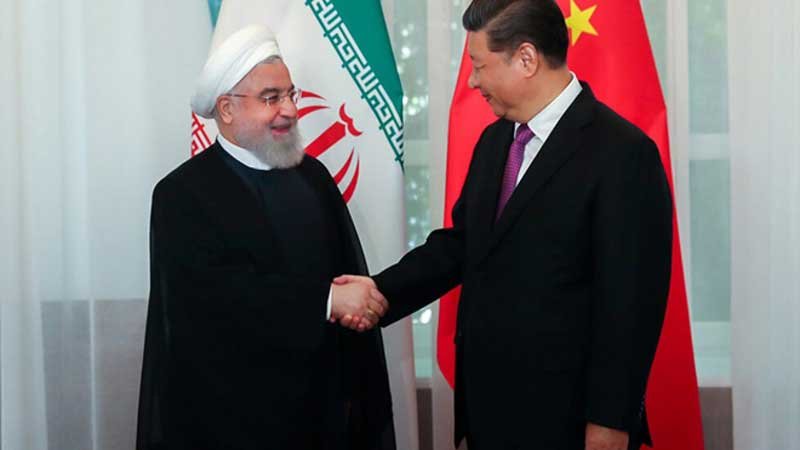।। Anik Ahmed ।।
A 25-year partnership agreement between China and Iran has been discussed in the diplomatic arena recently. Under the agreement, China will invest 400 billion USD in Iran over the next 25 years. Of this, 280 billion USD will be invested directly in the petrochemical, oil and gas sectors which are the driving force of the country’s economy. The remaining 120 billion USD will be spent on other sectors of the country.
China will increase oil imports from Iran ignoring US sanctions. Another important aspect of the strategic partnership is military cooperation, including sensitive issues such as arms development, training and exchange of intelligence, etc. Significantly, the agreement allows China to use Iran’s military bases. China also plans to deploy 5 thousand military security forces in Iran to protect its investment.
In addition to the benefits of long-term contracts with a 30 percent discount on Iran’s energy projects, Chinese companies can be initial partners in any energy projects of the country.
While seemingly beneficial to Iran, China’s interests in the deal are far-reaching. Due to the geopolitical situation, Iran and China have sought to strengthen ties over the last decade. Iran has become an important part of China’s flagship project Belt and Road Initiative (BRI) that stretches from Europe to Africa and Asia.
As questions have been raised about the effectiveness of the China-Pakistan Economic Corridor, the importance of Tehran has increased to Beijing. China has long sought to reduce its dependence on the Malacca strait for fuel supply as it is controlled by the US along with its Allies. With the support of Iran, China will be able to secure energy supplies as well as continue trade in Central Asia.
After the end of the Western-backed “Shah Era” by the Islamic Revolution in 1979, Iran’s foreign policy slogan was “Neither East nor West.” As a result, Iran has avoided alliance with the world’s superpowers for a long time.
Their long-standing position has changed with the formation of an alliance with Russia in the Syria War. Later, the Iranian navy took part in a joint exercise with China and Russia in the Oman Sea. Attempts are also being made to rebuild hostile relations with their neighbour Pakistan. In other words, the country is getting ready to completely shake off the shell of non-aligned foreign policy.
To face a US-led economic blockade, Tehran is choosing this new path to maintain its economic existence. Iran has become increasingly entrenched in world politics. So the deal with China comes as a “lifeline” for them.
Analysts in East Asia, the Middle East and the United States say that the deal between China and Iran will change the geopolitical landscape of a large part of the Middle East and Asia. This new possibility will undoubtedly be a headache not only for the United States but also for India, one of its allies in Asia.
India has already received the initial push to establish a position in Iran by dropping out of the important Chabahar port railway connection project. In establishing trade relations with Afghanistan, India had many ambitious plans for that project. Later, they were dropped from the Farzad-B gas field project.
While apparently blaming India’s slow investment in both cases, it is not difficult to guess that it is China who is behind the scenes. According to the new agreement, China will be able to take over the management of the Chabahar port from Iran whenever it wants, then Chabahar will be used directly for Chinese interests in conjunction with the Chinese-built port of Gwadar in Pakistan’s Balochistan province.
Analysts predict that the new deal will bring about a fundamental change in the oil and gas sector of the world. It will allow China, the first Super Power after the United States to enter the Middle East directly. As a result, the United States will face stiff competition in the region.
Plans to turn the stick around the Arab world by holding Saudi Arabia and the United Arab Emirates in their hands could be largely ineffective. Because China’s influence in the region will increase in the economic and trade sectors as well as in the military field. If Chinese influence grows in Iran’s ports, the United States will face stiff competition in the Persian Gulf also.
Analyzing the course of geopolitics, it is clear that a strategic alliance is being formed between China, Iran and Pakistan. In the near future Afghanistan, Iraq and Syria may be associated with it. It will also help the Russian master plan to create the ‘Golden Ring’ Strategic alliance among these countries. So, a successful conclusion of the Beijing-Tehran agreement will have far-reaching implications for the geopolitical context of Asia.
The writer is a student, department of law, University of Rajshahi

